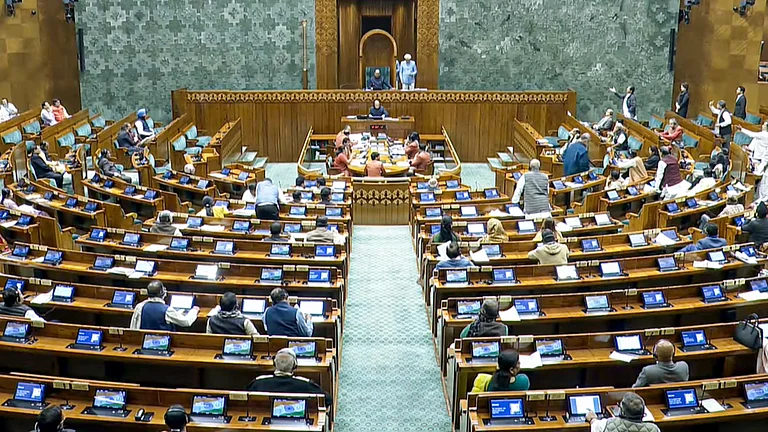The recent geopolitical developments, particularly the conflicts in Ukraine and Gaza, have underscored the necessity for India to enhance its Comprehensive National Power (CNP). Prime Minister Narendra Modi's visit to Russia amid the Ukraine conflict and subsequent ramblings in the US administration highlight the delicate balance India must maintain in its foreign policy. Add to this the ongoing faceoff with the Chinese People's Liberation Army (PLA) and Russia cosying up with China. India can navigate these complex international dynamics more effectively by keeping all options open while maintaining its strategic autonomy through bolstering its CNP.
This makes it imperative for the upcoming Union Budget of July 2024 to allocate substantial resources towards defence and strategic sectors. Enhancing self-reliance in defence, strengthening economic ties with multiple nations, and investing in technological and military capabilities are crucial steps that need financial backing. These measures will ensure that India remains ‘strategically autonomous’ and resilient in an increasingly multipolar world, equipped to handle external pressures and maintain its global standing.
As the Union Budget 2024 approaches, the Society of Indian Defence Manufacturers (SIDM), as an apex body for the defence manufacturing sector in India, is poised with a strategic vision that underscores the necessity of achieving self-reliance in defence manufacturing and reducing import dependency. Overturning promises of reliable supply chains in defence is no longer a remote possibility, it is a fair possibility. On this score, the upcoming budget is required to play a pivotal role in shaping the future of India's defence sector, providing it with the requisite financial impetus and policy framework to thrive in a delicate and challenging geopolitical landscape.
This time over, it needs to focus on modernisation and increased indigenous research and development (R&D). Going by the global geopolitical indicators, this may be a wise move. Over the last 10 years, the government allocation to defence as percentage of total spend has gradually gone down from about 19 per cent in 2014-15 to 14 per cent in 2022-23 after having touched 19.73 per cent in 2016-17. Understandably, Covid-19 pandemic and other developmental agenda would have moderated the focus on defence.
On the policy front, the government has made tremendous progress over the last decade creating an exceptionally conducive atmosphere to change the course of the Defence Industrial Base in the country. There is a need to sustain this momentum over the next 10 years to create additional defence industry infrastructure, especially in the private sector, and further finetuning on the policy front. For all of this, additional budgetary support as indicated earlier would be necessary.
Increase Defence Expenditure
One of the primary objectives for SIDM is to support the government’s vision of a self-reliant India, particularly in defence manufacturing. The Defence Manufacturing Vision 2047 is geared towards achieving strategic autonomy by reducing the dependency on foreign military hardware. This vision is crucial for India to maintain its sovereignty and strengthen its national security framework.
To achieve this, we recommend that the defence budget should prioritise capital expenditure to support the modernisation of armed forces. With the current allocation at Rs 1.72 lakh crore for FY 2024-25, a further increase will facilitate the acquisition of state-of-the-art military technologies, including fighter aircraft, ships, tanks, unmanned aerial systems (UAS) and counter UAS (C-UAS).
An increased allocation to the Defence Research and Development Organisation (DRDO) and the Technology Development Fund (TDF) is essential. The current allocation of Rs 23,855 crore for DRDO, with Rs 13,208 crore for capital expenditure, should be further enhanced to promote innovation and technology development.
Incentivise Domestic Manufacturers
Policies that focus on enhancing domestic value addition through indigenisation efforts at the parts, components, and sub-assembly levels are crucial. The development of key raw materials and embedded software should be a priority, supported by incentives for private investment in greenfield infrastructure and testing facilities.
Along with this, continued support and expansion of Defence Industry Corridors will encourage private investments, providing a robust infrastructure for defence manufacturing and testing.
In terms of acquisition process, major reforms are needed to shorten the timelines. Adopting modern methods such as the Quality and Cost Based Selection (QCBS) method for evaluations can significantly reduce the time taken from request for information (RFI) to contract awards, making the procurement process more efficient.
To enhance competitiveness, SIDM recommends reducing import duties on raw materials and intermediates required for manufacturing defence platforms and weapon systems. This reduction will lower production costs and make Indian defence products more competitive globally.
Focus on R&D and Exports
The budget should operationalise the policy of allocating 25 per cent of defence R&D funds to the private sector and academia. This move will foster innovation and technological advancement within the private sector, ensuring a more diversified and resilient defence industrial base.
Additionally, introducing incentives for early deliveries and higher indigenisation levels beyond stipulated requirements in the Request for Proposal (RFP) will encourage private sector efficiency and commitment to self-reliance.
Defence exports are vital for the long-term sustainability of the domestic defence industry. The government should provide high visibility to Indian defence capabilities through participation in international exhibitions and establish a dedicated Defence Export Promotion Council (DEPC). By leveraging lines of credit to friendly foreign countries, India can also position its defence products more favourably on the global stage.
However, the most vital unsaid policy change required is for the government to take on the responsibility of defence exports as is the case for most nations in the top 10 exporting nations in defence including USA, Russia, UK, France, etc. Establishing test and certification facilities that meet global standards will help Indian defence products gain international recognition, facilitating easier access to export markets
Investing in the capability to manufacture key and critical inputs for military systems, such as advanced materials, sensors, and components, is essential. This investment will ensure that India is not reliant on foreign suppliers for crucial defence technologies. Innovations for Defence Excellence (iDEX) and TDF schemes should receive enhanced funding to support startups and MSMEs in the defence sector. These entities are vital for the development of niche technologies and future military platforms.
The SIDM believes that the Union Budget 2024 should align with the broader vision of a self-reliant and strategically autonomous India. By prioritising capital expenditure, supporting domestic manufacturing, and fostering private sector participation, the budget can catalyse the transformation of India’s defence sector. Moreover, promoting defence exports and investing in critical infrastructure will ensure that India’s defence industry not only meets domestic needs but also becomes a formidable player on the global stage.
The road to self-reliance is long and challenging, but with the right policies and adequate financial support, India can achieve its Defence Manufacturing Vision 2047, securing its strategic autonomy and reinforcing its national security.
[The author is President, Society for Indian Defence Manufacturers (SIDM). Views expressed are personal.]

























